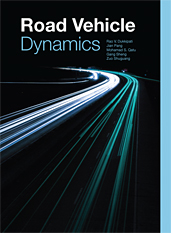Journal Article
Torque Vectoring Control for Distributed Drive Electric Vehicle Based on State Variable Feedback
2014-04-01
2014-01-0155
Torque Vectoring Control for distributed drive electric vehicle is studied. A handling improvement algorithm for normal cornering maneuvers is proposed based on state variable feedback control: Yaw rate feedback together with steer angle feedforward is employed to improve transient response and steady gain of the yaw rate, respectively. According to the feedback coefficient's influence on the transient response, an optimization function is proposed to obtain optimum feedback coefficients under different speeds. After maximum feedforward coefficients under different speeds are obtained from the constraint of the motor exterior characteristic, final feedforward coefficients are calculated according to an optimal steering characteristic. A torque distribution algorithm is presented to help the driver to speed up during the direct yaw moment control.


